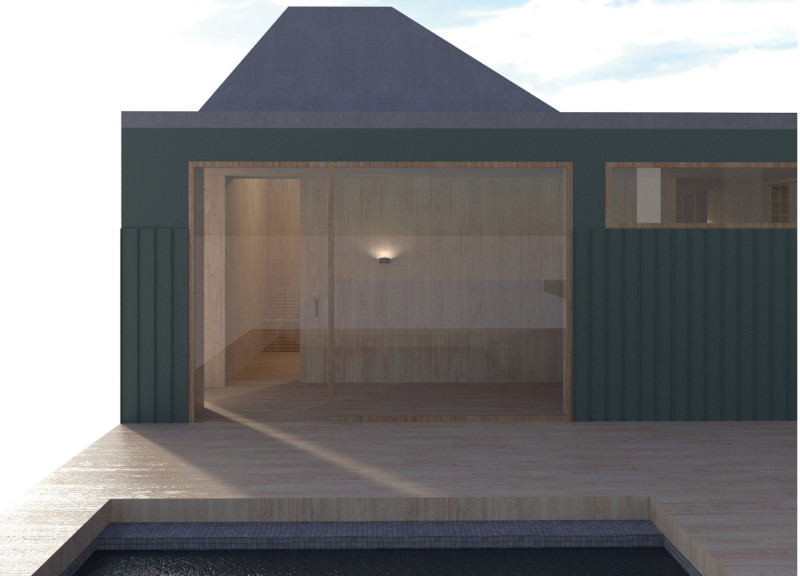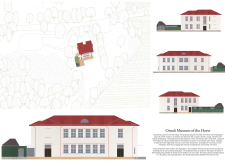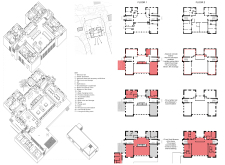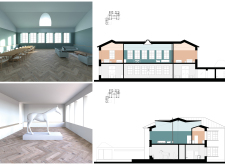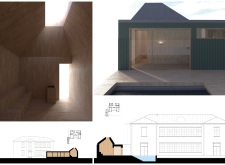5 key facts about this project
The Omuli Museum of the Horse is located in Latvia and is designed to reflect the rich cultural traditions of the region. It serves as an educational space that combines the former Omuli Primary School with modern architectural elements. The museum aims to immerse visitors in local stories and experiences, creating an environment where culture, history, and nature come together.
Architectural Concept
The design encourages visitors to actively engage with Latvia’s cultural heritage. Landscaped grounds complement the indoor spaces and provide an outdoor area for exploration. This allows guests to connect with various aspects of local history, including traditional stories, songs, and crafts. The layout emphasizes accessibility while fostering a sense of community and belonging.
Spatial Organization
The museum features a thoughtful arrangement of communal and private spaces. Bedrooms are organized around a central communal living room that encourages social interaction among residents. This organization reflects the importance of shared experiences in Latvian culture. It allows individuals to connect through their cultural narratives while enjoying comfort and privacy.
Integration with Existing Structure
Architectural interventions are designed to respect and preserve the existing school building's historical significance. Key elements of the original structure are maintained, reinforcing its role as a cultural landmark. By keeping the historical aspects intact, the design enriches the visitor experience and highlights the stories and heritage embedded in the building.
Nature and Relaxation Elements
A prominent feature is the sauna block, which enhances visitors' connection to the surrounding environment. It includes a plunge pool located within the grounds, providing a space for relaxation and cultural practices. The design emphasizes the importance of nature, reflecting the integration of traditional customs into the museum experience.
The facade incorporates both historical and modern elements, creating a dialogue between old and new. The design emphasizes accessibility and community engagement, inviting visitors to explore and appreciate Latvia's cultural history.


